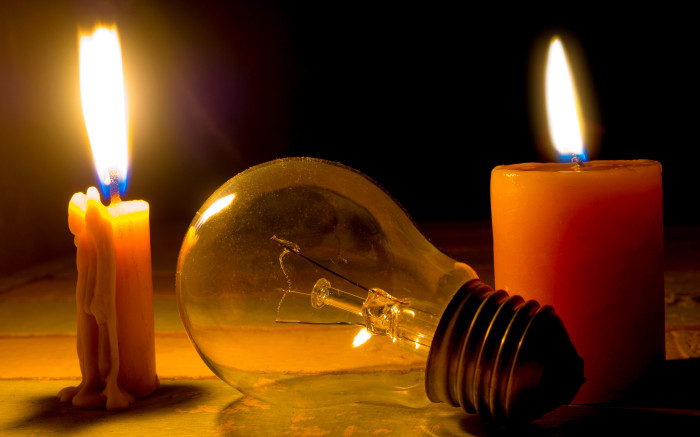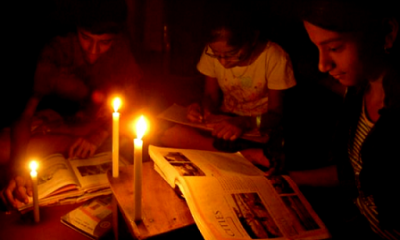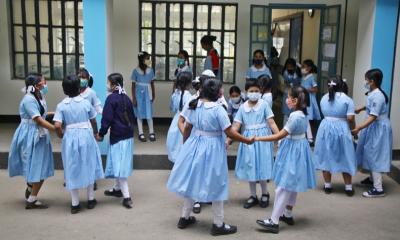- Load shedding happens as demand & production mismatch
- Production shut down due to gas shortage
- Villagers to suffer most
- Load shedding now 1500 MW, will be 2000 MW soon
With the increase in heat, load shedding has started in the capital along with rural areas, divisional cities. Load shedding is happening for 10 to 12 hours day and night in some parts of the divisional cities and rural areas. And there is load shedding for three to four hours in some areas of the capital. This load shedding is happening because production cannot be coordinated with the demand.
Officials of the Bangladesh Power Development Board (PDB) said that due to the energy crisis, electricity cannot be produced as per the demand. On the other hand, during the scorching heat of summer, as the day’s progress, the amount of load shedding increases and the power supply situation worsens. At present there is an average load shedding of 1500 megawatts. It will increase to 2000 MW in future. As a result, customers have to bear load shedding even during Eid holidays.
Those concerned said that several power plants with a power generation capacity of about 3,000 megawatts have been shut down due to gas shortage. Summit's floating LNG terminal was scheduled to be commissioned on April 3 but did not happen. Will try to open again today Monday. The gas supply will increase when the terminal becomes operational. Then the load shedding will reduce a bit.
Nasrul Hamid, State minister of the Ministry of Power, Energy and Mineral Resources, said about load shedding, Summit's LNG terminal will resume gas supply soon. It will reduce power shortage. Oil based plants don't want to run for long. This increases the cost of power generation. Summer preparations are underway. Hope there will be no crisis.
Khandkar Mokammel Hossain, a PDB Member (Production), said despite trying our best to produce electricity as per demand, we are having some difficulties. Maximum production is from coal. If the LNG terminal opens, the supply of gas will increase in the power sector. Oil plants are being directed to increase production. The situation will improve soon.
Out of Dhaka, it has been found that load shedding is happening in various divisional cities and district cities outside Dhaka. Hourly load shedding is happening in some divisional cities day and night. Even during Iftar, Tarabi and Sehri there is no electricity. The situation in the village is even worse. Load shedding has been increasing in the capital for a week. Load shedding has been reported in almost all areas of Rampura, Mirpur, Green Road, and Old Dhaka of the capital. Those concerned said that there will be load shedding during the Eid holidays as well. But it will be less.
In the time of Eid, electricity demand will be high in rural and villages areas as almost all of the people who live in divisional or capital city will go to their home amid Eid. And with the help of heat wave there will be more demand for electricity. Basically, child and old ages people and sick people will suffer most if load shedding occurs frequently.
According to PDB data, load shedding was 1 thousand 752 MW at 12 pm on Saturday. At that time the electricity demand was 14 thousand 400 MW. At 1 am, the demand decreased slightly to 14 thousand 100 MW. At that time load shedding was 1 thousand 636 MW. At 2 am, the demand is the same, but the production increases slightly and the load shedding decreases to 1,537 MW. At 3 pm the demand increased again to 14 thousand 200 MW. At that time load shedding is 1 thousand 561 MW.
At 4 pm, load shedding is 1,335 MW. After that there was a slight upswing but there was never less than 1000 MW load shedding till 7 pm. Out of this, a minimum of 1,130 MW load shedding occurs at 7 am. And at 3 pm it exceeds 1 thousand 400 MW. After that the load shedding decreased slightly again.
Earlier on Friday, April 5, there was a similar picture. On that day at 12 o'clock in the night, the maximum load shedding of 1 thousand 890 megawatts of this year took place and 1 thousand 646 megawatts at 1 am, 1 thousand 634 megawatts at 2 am and 1 thousand 378 megawatts at 3 am. Load shedding was slightly less on Friday as it was a weekend. On that day, load shedding was below 1000 megawatts from 7 am to 10 pm. At 11 pm, it releases 1500 megawatts in one jump.
1,550 MW load shedding took place at 12 pm on April 4. On that day, 1 thousand 526 MW, 1 thousand 354 MW at 2 am and 1 thousand 378 MW at 3 am were load shedding. On that day only at 8 am and from 7 pm to 7:30 pm the load shedding fell below 1000 megawatts. At 3 pm it releases 1500 megawatts. A similar picture was on April 3. One thousand 826 MW load shedding took place at 12:00 that day. Apart from this, 1 thousand 645 MW load shedding is done at 1 am, 1 thousand 436 MW at 2 am and 1 thousand 255 MW at 3 am. However, there were more loads shedding on April 2. On that day at 3 pm the maximum load shedding was 1 thousand 732 megawatts. However, on April 1, the load shedding was below 1000 MW throughout the day. At 11 pm that day, it released a thousand megawatts.
Md Kawsar Amir Ali, Managing Director (MD) of Dhaka Electric Supply Company (DESCO) said that the use of AC is increasing in the capital. This has also increased the demand for electricity in our distribution area. We have been able to supply all the demands in Dhaka. There may be some supply issues in some areas.
ZH






